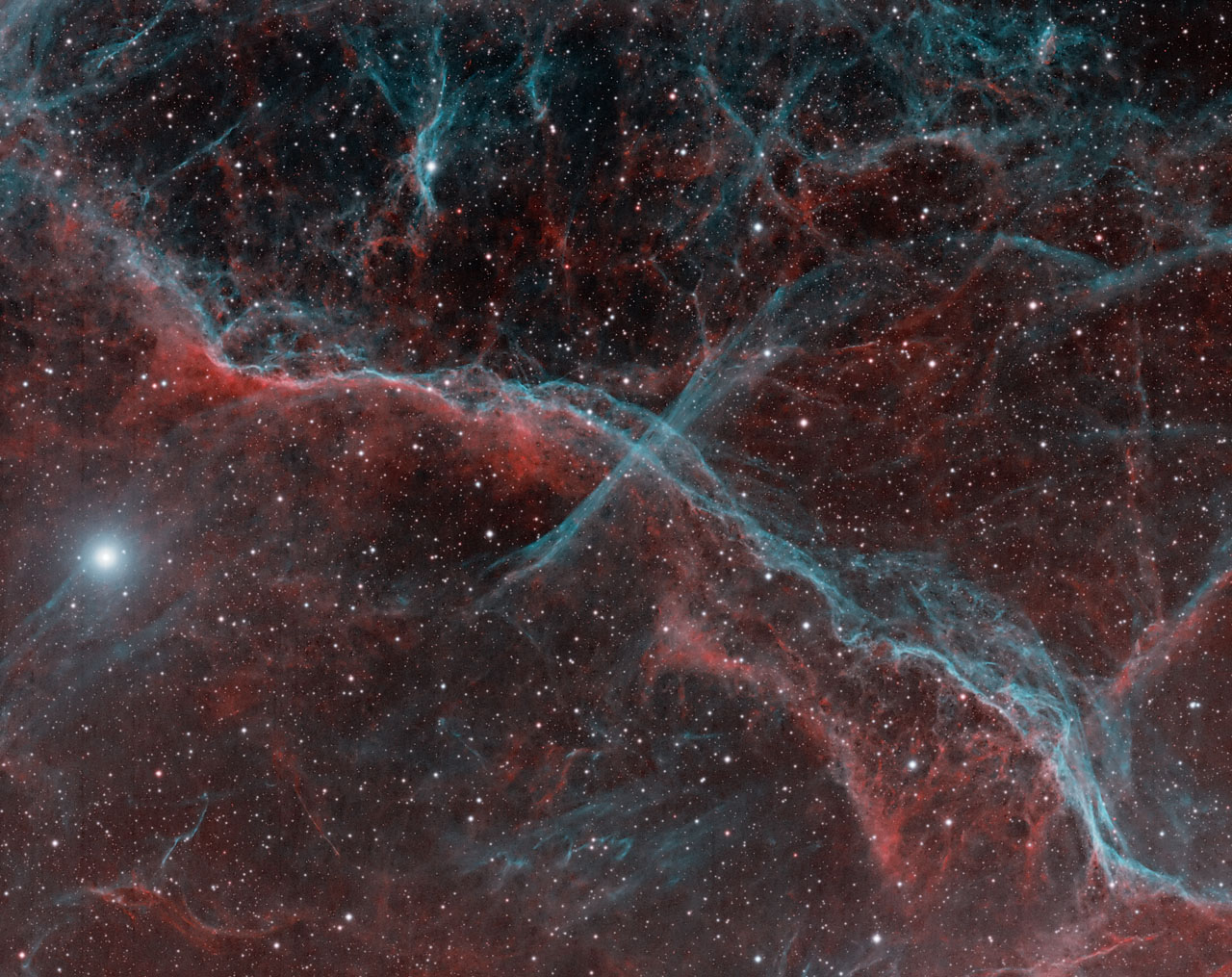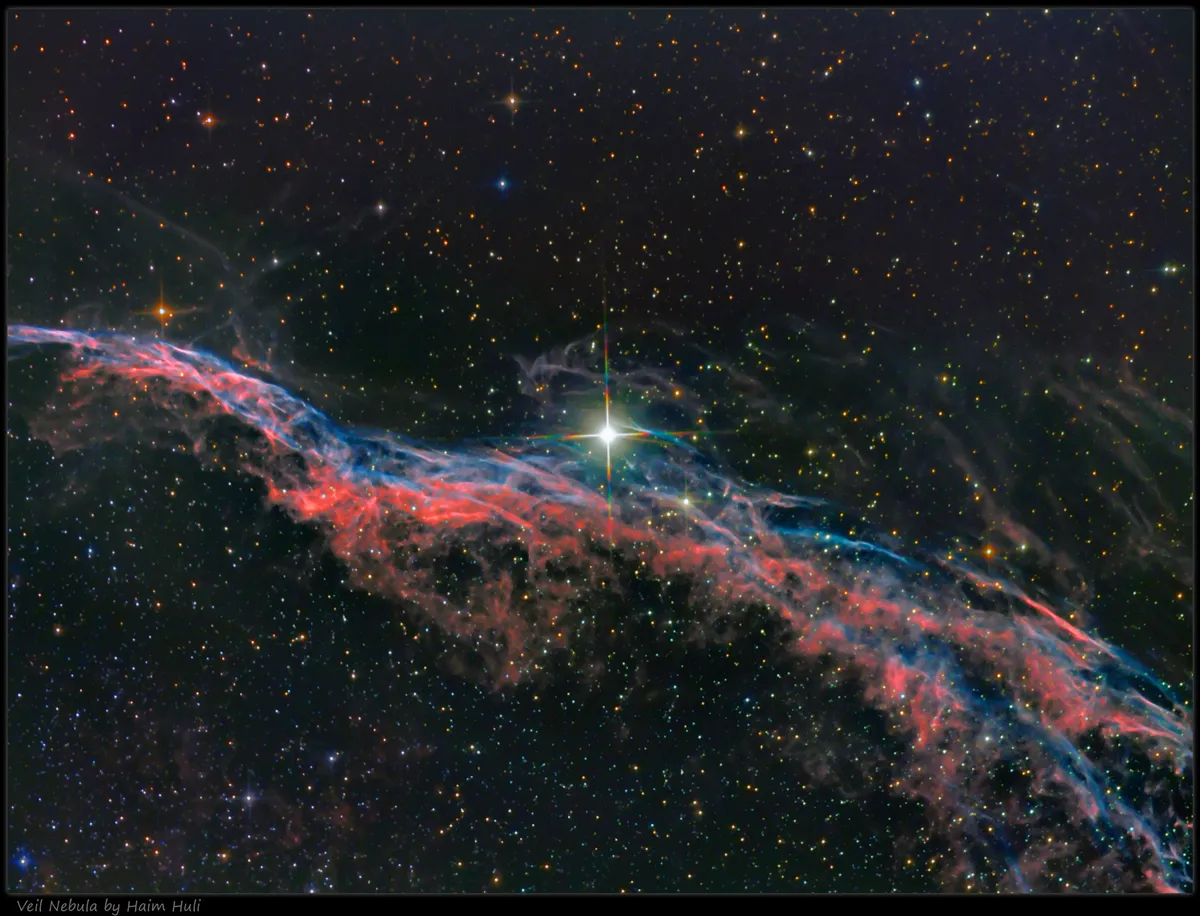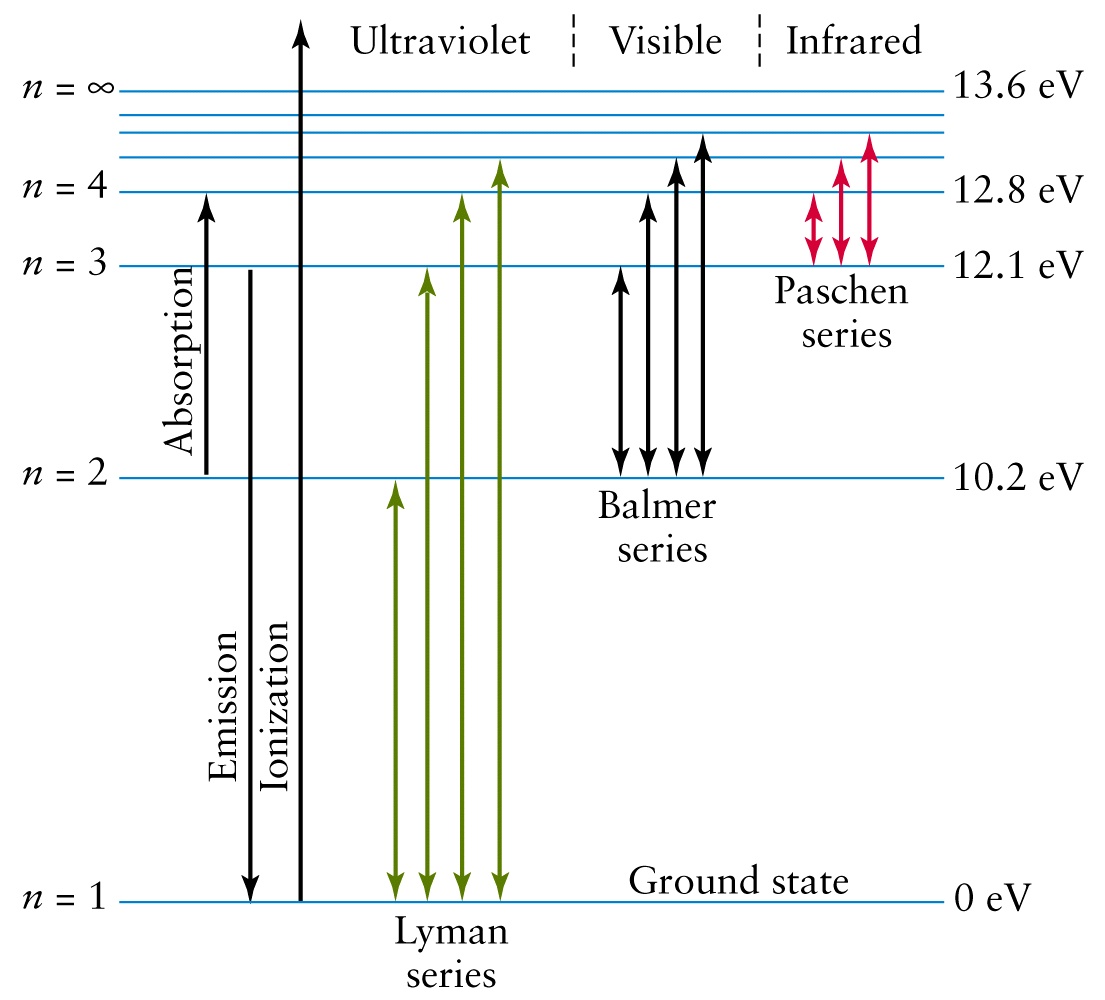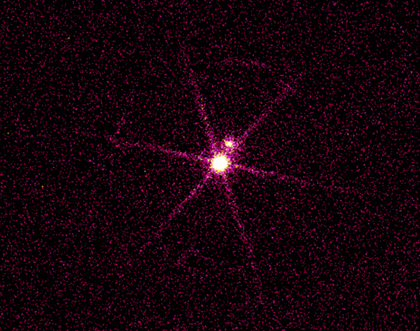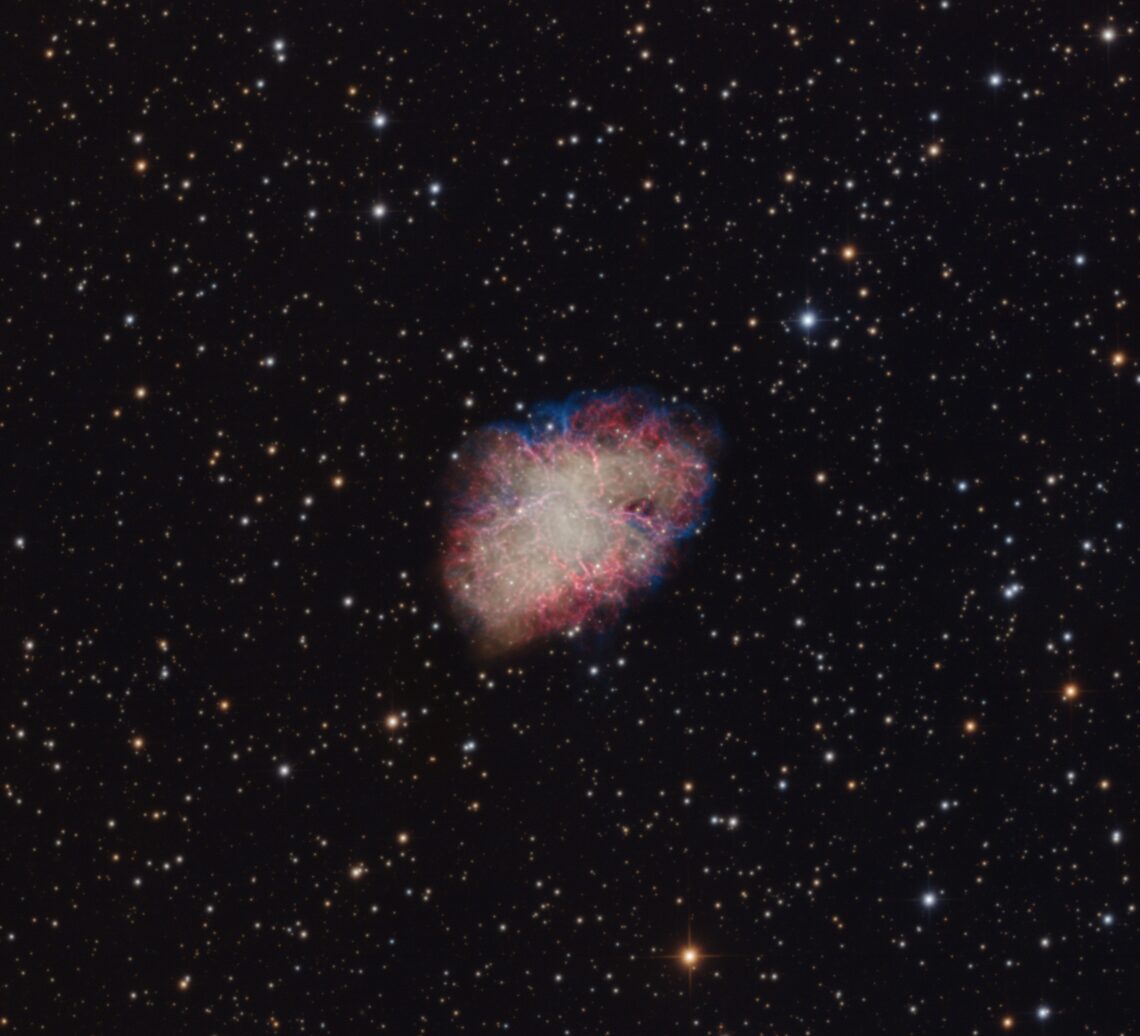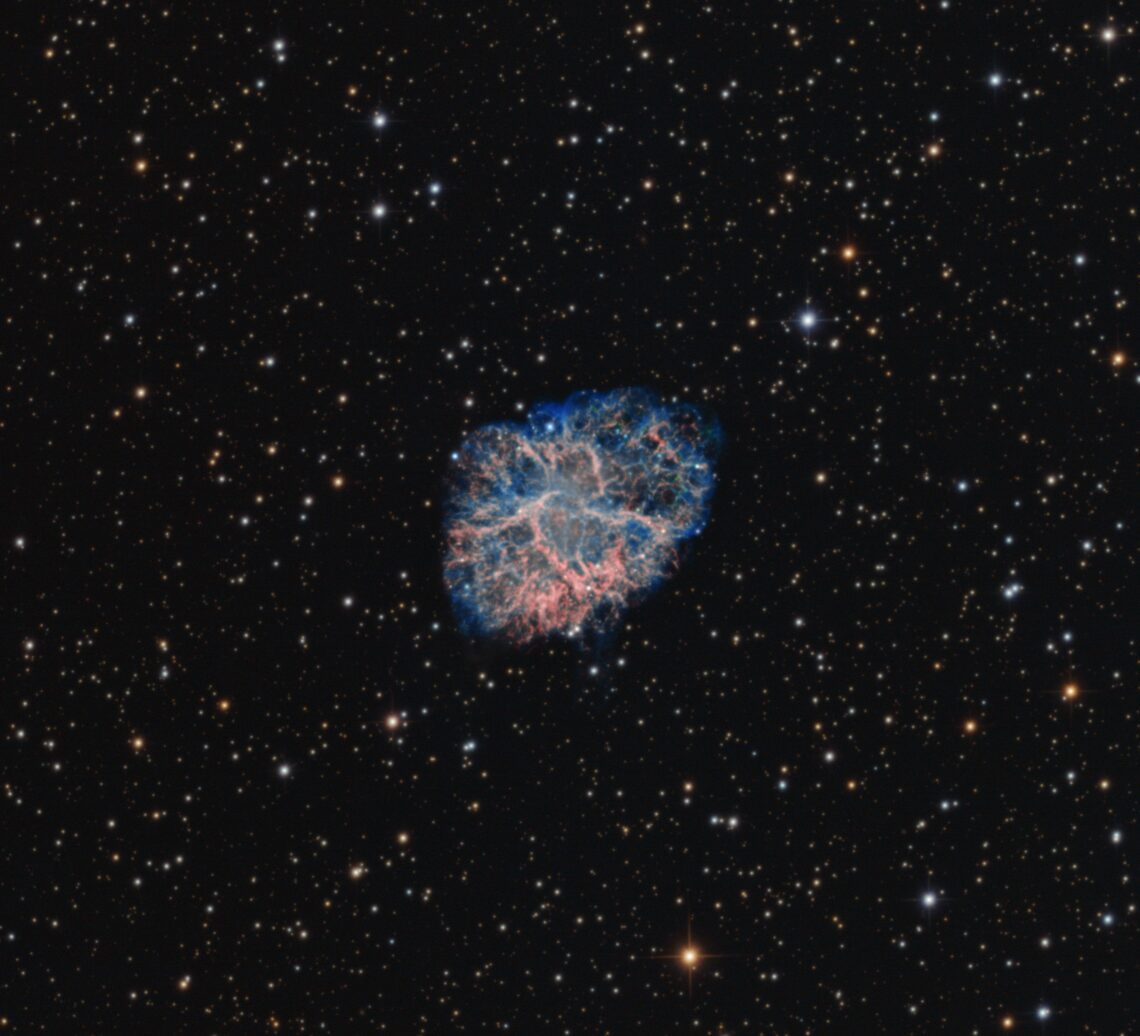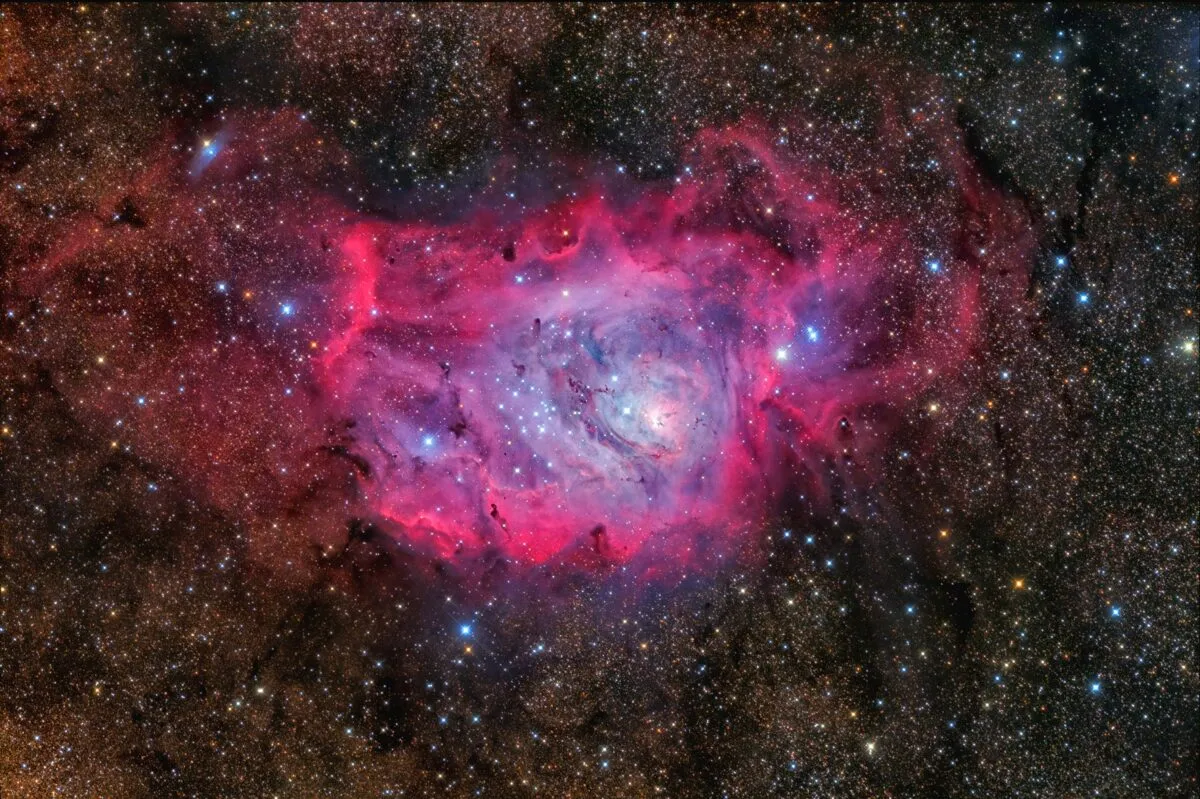johnnydeep wrote: ↑Tue Feb 27, 2024 8:38 pm
Ann wrote above:
Supernova remnants are highly ionized at their edges, where they typically glow blue-green. "Normal" emission nebulas are the other way round: they create OIII emission near their centers and less energetic forms of ionizations, such as Hα, further out.
Why is this, exactly?
As you know, Johnny, if you want an exact answer, you must ask Chris. But I'll have a go.
Bear in mind that we - or at least
I - talk about very specific
visible wavelengths when I talk about degrees of ionizations of nebulas. Basically I just talk about OIII, at 501 nm, a greenish-cyan hue that is often mapped as blue, and Hα, at 656 nm, which our eyes see as red.
As humans, we are interested in - or attracted to? - light that we can see. OIII and Hα are wavelengths of light that we can see (even though it's basically impossible for our eyes to see the very faint red Hα light of nebulas, even though we can often see this light as gray).
But there are so many other types of ionization out there, and hydrogen itself is capable of producing ionized wavelengths that we absolutely can't see:
Let me give you another example of how wavelengths matter.
As for emission nebulas and supernova remnants, I talk about the energy that ionizes hydrogen to hydrogen alpha in the Balmer series and oxygen to doubly ionized oxygen, OIII, in an oxygen series of ionization whose designation I don't know.
Consider the Crab Nebula, a very young supernova remnant. Let's look at it in two versions, one pure RGB and one OIII/Hα/SII:
The blue color in the HαOIIISII image shows us the energy that is created as the supernova debris slams into the surrounding medium. However, much higher energy is generated in the center of the Crab Nebula:
Eric Mack of
CNET wrote about the Crab Nebula:
The observatory high in the Himalayan foothills discovered a photon of energy from the nebula measuring one quadrillion electron volts, a level so high that it points to the existence of a natural particle accelerator near the center of the Crab Nebula that is about one-tenth the size of our entire solar system. Such a system would be able to energize electrons to levels 20,000 times that which the accelerators constructed on Earth at places like CERN can accomplish.
Enormous amounts of energy are created inside the Crab Nebula, but this ultra-high energy does not produce that much visible light. The yellow-white light seen in the RGB picture of the Crab Nebula would be synchrotron emission, which is generated as electron whirl around in a magnetic field at nearly the speed of light. The way I have understood it, synchrotron emission radiates at all wavelengths, which would create a neutral overall color.
So the way I have understood it, the outer edges of expanding supernova remnants - and bear in mind that they are indeed expanding quite fast! - slam into the surrounding interstellar medium, and the "impact" produces just the amount of energy that ionizes oxygen and makes it glow blue-green.
As for emission nebulas, they expand, but they certainly don't expand very fast. They do push gas away from the hot stars and often make it pile up in a rim around the nebula, but they don't do it with enough force to ionize OIII. Instead, the amount of energy that ionizes oxygen is typically found in the relative vicinity of the hot main sequence or giant stars near the center of emission nebulas.
You must also consider the nature of the matter that is being pushed in supernova remnants and in emission nebulas as well as the forces that are pushing it. In emission nebulas, hydrogen gas is being pushed by stellar winds and ultraviolet emission from hot stars, but in supernova remnants, clumps of stellar matter are being ejected like projectiles at supersonic speeds following a titanic blast.
Emission nebulas are much less violent than SNRs, but there are forces pushing on the gas in them, too.
The picture by Andreas Papp looks like an RGB(Hα) image to me. I'd say that it has been processed to show the "thinness" of the central part of the nebula and the presence of bluish light there, which comes from both reflected starlight and OIII. (In most RGB images, the red Hα is too bright for the bluish OIII and reflected starlight to show up very much.)
You can also see how much of the hydrogen has been pushed to the rim of the nebula, where it looks very thick. Here it glows red from Hα, not blue or green from OIII.
One type of objects that often creates huge amounts of OIII is the central stars of planetary nebulas. These burnt-out cinders are very hot indeed, typically much hotter than main sequence and giant O-type stars like the O-type stars of Orion, and they emit copious ultraviolet light, which strongly ionizes oxygen and makes it glow blue-green. You are not likely to find many other nebulas in the sky that are so visually colorful.
Ann
 Supernova Remnant Simeis 147
Supernova Remnant Simeis 147